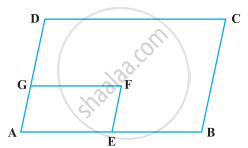Advertisements
Advertisements
प्रश्न
In a parallelogram ABCD, E is the midpoint of AB and DE bisects angle D. Prove that:CE is the bisector of angle C and angle DEC is a right angle
उत्तर
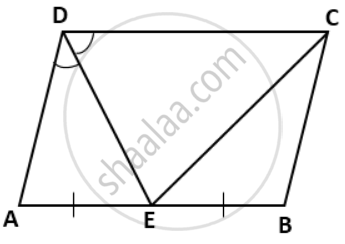
Since BC = BE
⇒ ∠BEC = ∠BCE ...(Angles opposite to equal sides are equal)
∠BEC = ∠ECD ...(Alternate angles)
⇒ ∠BCE = ∠ECD
⇒ CE is the bisector of ∠C ....(proved)
∠DCE = `(1)/(2)∠"C"` ...(Given CE bisects ∠D)
∠CDE = `(1)/(2)∠"D"` ...(Given DE bisects ∠D)
∠DCE + ∠CDE
= `(1)/(2)(∠"C" + ∠"D")`
= `(1)/(2) xx 180°` = 90°
Thus, in ΔDCE,
∠DEC = 180° - ∠DCE + ∠CDE = 180° - 90°
⇒ ∠DEC = 90°.
APPEARS IN
संबंधित प्रश्न
The diagonal BD of a parallelogram ABCD bisects angles B and D. Prove that ABCD is a rhombus.
Prove that the bisectors of opposite angles of a parallelogram are parallel.
Points M and N are taken on the diagonal AC of a parallelogram ABCD such that AM = CN. Prove that BMDN is a parallelogram.
ABCD is a parallelogram. The bisector of ∠BAD meets DC at P, and AD is half of AB.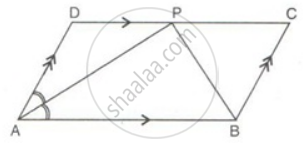
Prove that: BP bisects ∠ABC.
ABCD is a parallelogram. The bisector of ∠BAD meets DC at P, and AD is half of AB.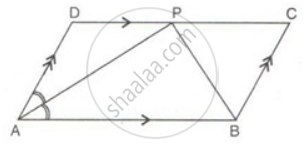
Prove that: ∠APB is a right angle.
In the given figure, MP is the bisector of ∠P and RN is the bisector of ∠R of parallelogram PQRS. Prove that PMRN is a parallelogram.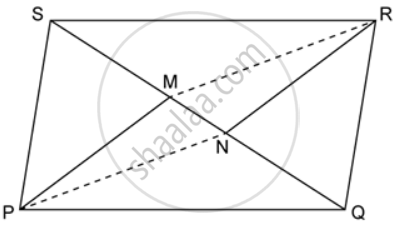
In the given figure, the perimeter of parallelogram PQRS is 42 cm. Find the lengths of PQ and PS.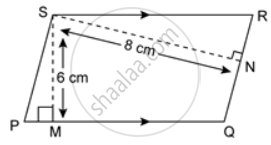
Which of the following statement is correct?
In the following figure, it is given that BDEF and FDCE are parallelograms. Can you say that BD = CD? Why or why not?
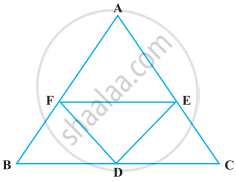
In the following figure, ABCD and AEFG are two parallelograms. If ∠C = 55º, determine ∠F.
